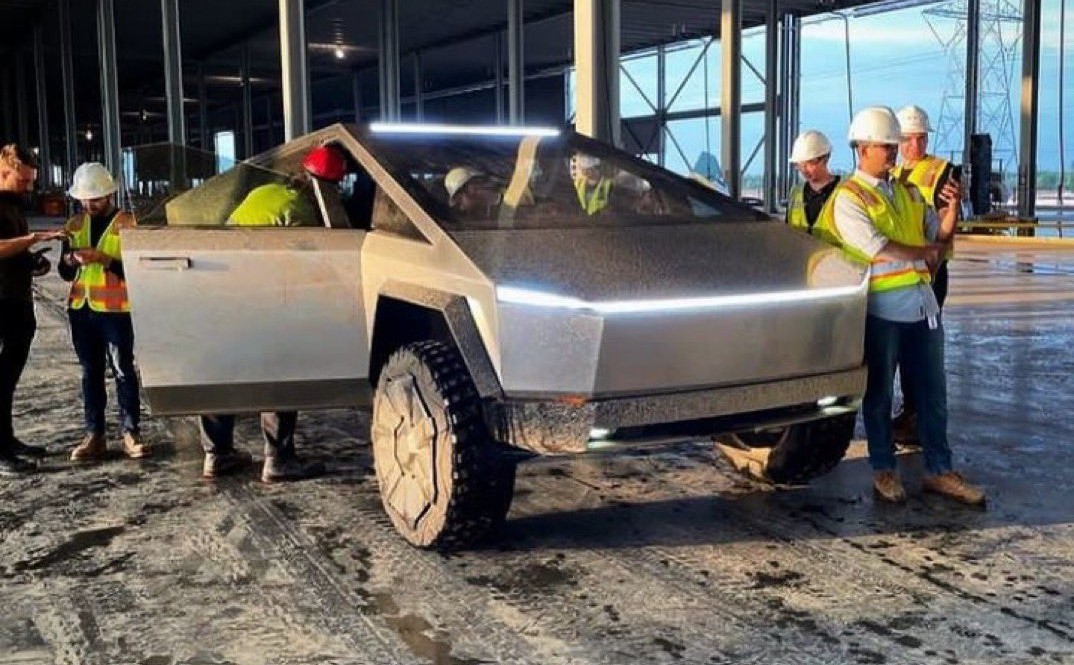
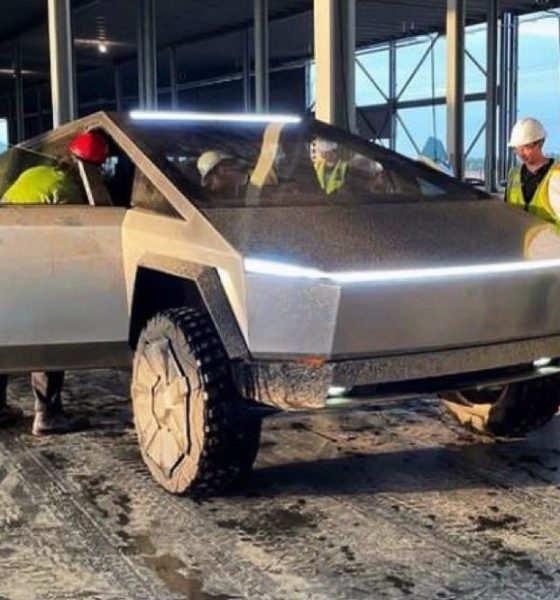
News
The Tesla Cybertruck’s looks are not as big of a deal as critics think
Just recently, Elon Musk acknowledged on Twitter that the Tesla Cybertruck might be a flop simply because it is so unlike anything else on the market. This has resulted in numerous Tesla skeptics predicting that the all-electric pickup truck’s design is so out there that the vehicle would be the company’s first true failure. Such sentiments, however, may be overblown, as the Cybertruck’s looks may not be as big of a deal as critics think.
Numbers Don’t Lie, and Specs Matter
The Cybertruck is a pickup truck, even if it does not look like a traditional truck. This means that it is designed to be capable enough to handle tasks that are typically expected of pickups. This is the reason why the Cybertruck has a large 6.5-foot bed, 100 cubic feet of exterior lockable storage, up to 3,500 lbs of payload capacity, and a towing capacity of up to 14,000 pounds. These matter, especially among buyers who actually use their pickup trucks for work.
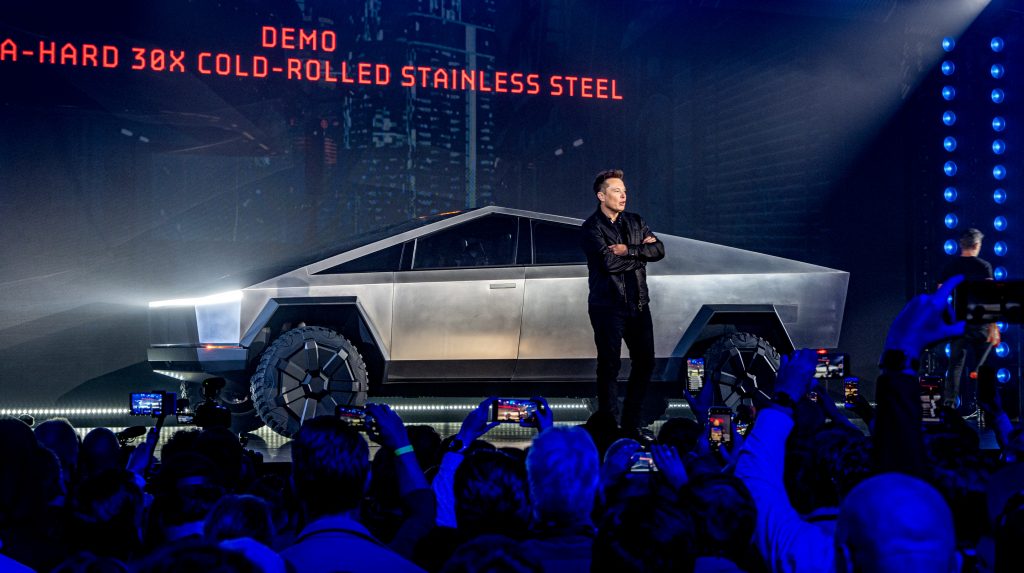
These specs are pretty hard to beat. Even the Ford F-150 Lightning, which seems to be on track to become one of the most popular all-electric pickup trucks in the market, does not match up to the Cybertruck’s specs. Even if rumors are true and the Ford F-150 Lightning really has a range above 400 miles per charge, the Cybertruck’s tri-motor variant is listed with a range of over 500 miles. Tesla has so far not disappointed when it comes to its vehicles’ EPA-rated miles.
A Reliable, Rapid Charging Network Matters
During Car and Driver‘s recent “EV 1000” test, it was revealed that the US’ best electric vehicle rapid charging infrastructure is still the Tesla Supercharger Network. There are other networks that provide rapid charging services, but few if any could match the Supercharger Network’s ease of use, reliability, and sheer size. This matters a lot for all-electric pickup trucks, many of which would likely not achieve their rated range due to the cargo they carry or the items they tow anyway.
What is rarely mentioned is that Teslas are not only compatible with the Supercharger Network. Teslas can also charge at EVgo and Electrify America stations, to name a few. This means that the Cybertruck could charge at the same rapid charging stations as rivals like the F-150 Lightning on top of the Supercharger Network. This is a notable advantage, and one that would likely be appreciated by those who drive the all-electric truck.
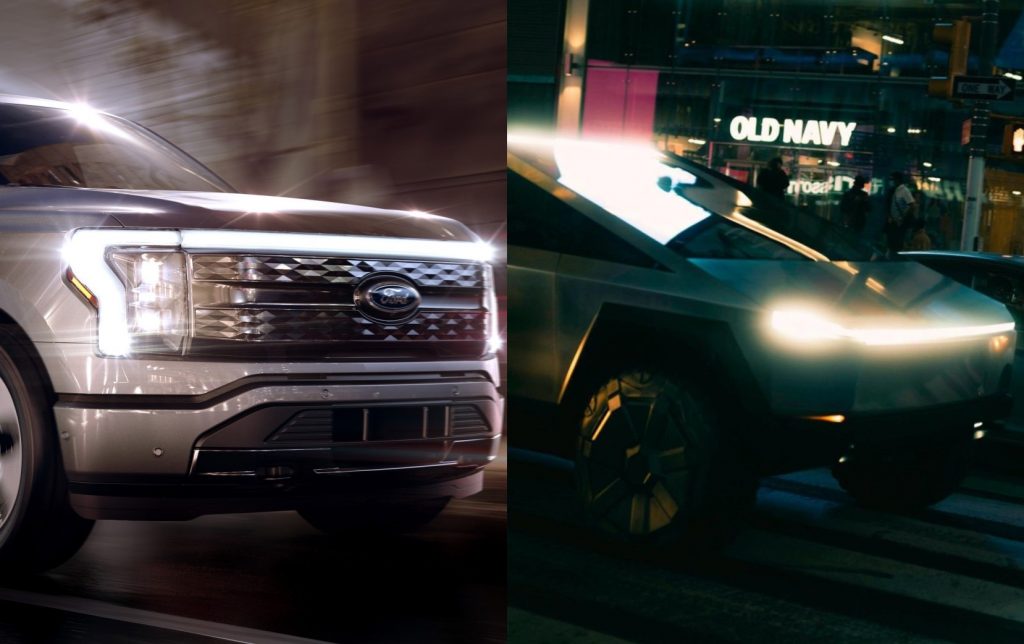
Looks May Not Matter As Much
One has to get this point out of the way. Trucks are tough vehicles that are widely expected to handle the worst that the elements can offer. The Cybertruck could definitely be described as ugly, but it’s just like other pickups in the market in the way that it’s not necessarily competing with exotic supercars in the looks department. Elon Musk may have a point when he noted that pickups have generally looked the same over the decades, and it might be time for something new.
The Cybertruck is designed to weather the worst that the elements can offer, and with its thick stainless steel exoskeleton and tank-like appearance, it definitely ticks off the boxes in the toughness department. With this in mind, reasons like “but it looks so weird” and “I’m not comfortable with its looks” almost sound pretty lame. Even businesses that operate fleets of pickup trucks would probably prefer a vehicle that’s superior in specs and price, after all, even if its looks leave some to be desired.
Besides, different does not necessarily mean that something will be a flop. Just look at the Nissan Juke. No one can deny that it looks extremely weird, but it has sold over 1 million units in the first decade of its production. Why was this so? Because it’s a dang fun car and it’s quirky, and it does crossover things in a very good crossover way. It’s fairly reliable, sturdy, and cheap to maintain. Other drivers on the road would be hard-pressed to ignore it too, for better or for worse.
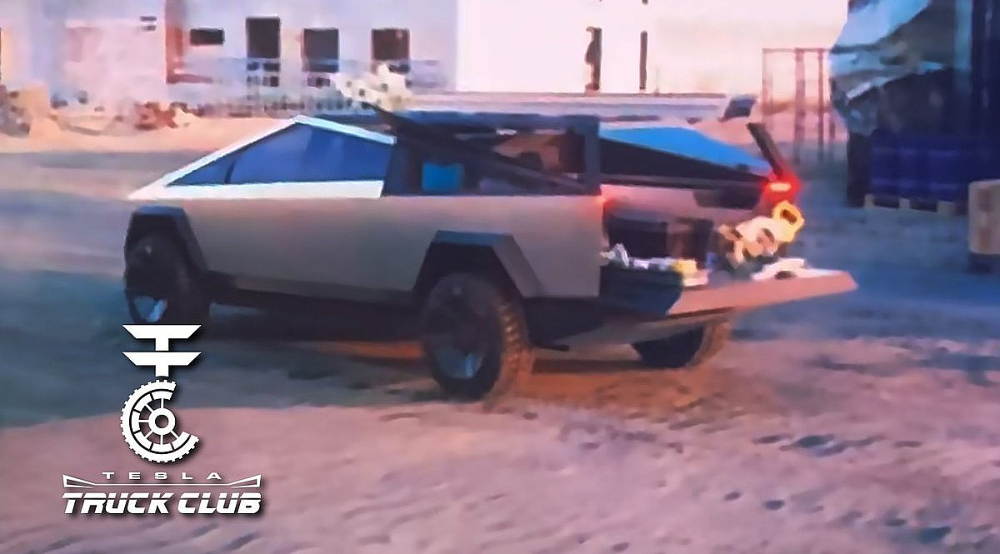
An iPhone Lesson
A pretty popular anecdote in the mobile phone industry involves the first-generation iPhone and how it was received by critics. Back then, the term “smartphone” generally referred to a fairly large handheld device with a full physical keyboard and some email capabilities. Then came a block of glass with an onscreen keyboard that offers no tactile feedback when typing. This attracted its own fair share of skeptics, many of whom felt like the device was just too strange to be a serious threat to the mobile phone giants at the time, such as Nokia and Blackberry.
Just check out this section from a 2007 review from TechCrunch, which was skeptical of the iPhone’s keyboard. “That virtual keyboard will be about as useful for tapping out emails and text messages as a rotary phone. Don’t be surprised if a sizable contingent of iPhone buyers express some remorse at ditching their BlackBerry when they spend an extra hour each day pumping out emails on the road,” the publication wrote.
So can the Cybertruck be a flop? It may, though unofficial trackers estimate that over 1 million reservations for the vehicle have been filed to date. But even if the vehicle does turn off many buyers such as die-hard truck guys who swear by their F-150s’ looks, the fact remains that the Cybertruck does not need the support of avid truck aficionados to be successful. It just has to show the world that it is a viable product with superior specs and durability at a reasonable price point. If it accomplishes this, then the Cybertruck would likely be fine.
Don’t hesitate to contact us with news tips. Just send a message to tips@teslarati.com to give us a heads up.

News
Tesla starts showing how FSD will change lives in Europe
Local officials tested the system on narrow country roads and were impressed by FSD’s smooth, human-like driving, with some calling the service a game-changer for everyday life in areas that are far from urban centers.

Tesla has launched Europe’s first public shuttle service using Full Self-Driving (Supervised) in the rural Eifelkreis Bitburg-Prüm region of Germany, demonstrating how the technology can restore independence and mobility for people who struggle with limited transport options.
Local officials tested the system on narrow country roads and were impressed by FSD’s smooth, human-like driving, with some calling the service a game-changer for everyday life in areas that are far from urban centers.
Officials see real impact on rural residents
Arzfeld Mayor Johannes Kuhl and District Administrator Andreas Kruppert personally tested the Tesla shuttle service. This allowed them to see just how well FSD navigated winding lanes and rural roads confidently. Kruppert said, “Autonomous driving sounds like science fiction to many, but we simply see here that it works totally well in rural regions too.” Kuhl, for his part, also noted that FSD “feels like a very experienced driver.”
The pilot complements the area’s “Citizen Bus” program, which provides on-demand rides for elderly residents who can no longer drive themselves. Tesla Europe shared a video of a demonstration of the service, highlighting how FSD gives people their freedom back, even in places where public transport is not as prevalent.
What the Ministry for Economic Affairs and Transport says
Rhineland-Palatinate’s Minister Daniela Schmitt supported the project, praising the collaboration that made this “first of its kind in Europe” possible. As per the ministry, the rural rollout for the service shows FSD’s potential beyond major cities, and it delivers tangible benefits like grocery runs, doctor visits, and social connections for isolated residents.
“Reliable and flexible mobility is especially vital in rural areas. With the launch of a shuttle service using self-driving vehicles (FSD supervised) by Tesla in the Eifelkreis Bitburg-Prüm, an innovative pilot project is now getting underway that complements local community bus services. It is the first project of its kind in Europe.
“The result is a real gain for rural mobility: greater accessibility, more flexibility and tangible benefits for everyday life. A strong signal for innovation, cooperation and future-oriented mobility beyond urban centers,” the ministry wrote in a LinkedIn post.
News
Tesla China quietly posts Robotaxi-related job listing
Tesla China is currently seeking a Low Voltage Electrical Engineer to work on circuit board design for the company’s autonomous vehicles.

Tesla has posted a new job listing in Shanghai explicitly tied to its Robotaxi program, fueling speculation that the company is preparing to launch its dedicated autonomous ride-hailing service in China.
As noted in the listing, Tesla China is currently seeking a Low Voltage Electrical Engineer to work on circuit board design for the company’s autonomous vehicles.
Robotaxi-specific role
The listing, which was shared on social media platform X by industry watcher @tslaming, suggested that Tesla China is looking to fill the role urgently. The job listing itself specifically mentions that the person hired for the role will be working on the Low Voltage Hardware team, which would design the circuit boards that would serve as the nervous system of the Robotaxi.
Key tasks for the role, as indicated in the job listing, include collaboration with PCB layout, firmware, mechanical, program management, and validation teams, among other responsibilities. The role is based in Shanghai.
China Robotaxi launch
China represents a massive potential market for robotaxis, with its dense urban centers and supportive policies in select cities. Tesla has limited permission to roll out FSD in the country, though despite this, its vehicles have been hailed as among the best in the market when it comes to autonomous features. So far, at least, it appears that China supports Tesla’s FSD and Robotaxi rollout.
This was hinted at in November, when Tesla brought the Cybercab to the 8th China International Import Expo (CIIE) in Shanghai, marking the first time that the autonomous two-seater was brought to the Asia-Pacific region. The vehicle, despite not having a release date in China, received a significant amount of interest among the event’s attendees.
Elon Musk
Elon Musk and Tesla AI Director share insights after empty driver seat Robotaxi rides
The executives’ unoccupied tests hint at the rapid progress of Tesla’s unsupervised Robotaxi efforts.

Tesla CEO Elon Musk and AI Director Ashok Elluswamy celebrated Christmas Eve by sharing personal experiences with Robotaxi vehicles that had no safety monitor or occupant in the driver’s seat. Musk described the system’s “perfect driving” around Austin, while Elluswamy posted video from the back seat, calling it “an amazing experience.”
The executives’ unoccupied tests hint at the rapid progress of Tesla’s unsupervised Robotaxi efforts.
Elon and Ashok’s firsthand Robotaxi insights
Prior to Musk and the Tesla AI Director’s posts, sightings of unmanned Teslas navigating public roads were widely shared on social media. One such vehicle was spotted in Austin, Texas, which Elon Musk acknowleged by stating that “Testing is underway with no occupants in the car.”
Based on his Christmas Eve post, Musk seemed to have tested an unmanned Tesla himself. “A Tesla with no safety monitor in the car and me sitting in the passenger seat took me all around Austin on Sunday with perfect driving,” Musk wrote in his post.
Elluswamy responded with a 2-minute video showing himself in the rear of an unmanned Tesla. The video featured the vehicle’s empty front seats, as well as its smooth handling through real-world traffic. He captioned his video with the words, “It’s an amazing experience!”
Towards Unsupervised operations
During an xAI Hackathon earlier this month, Elon Musk mentioned that Tesla owed be removing Safety Monitors from its Robotaxis in Austin in just three weeks. “Unsupervised is pretty much solved at this point. So there will be Tesla Robotaxis operating in Austin with no one in them. Not even anyone in the passenger seat in about three weeks,” he said. Musk echoed similar estimates at the 2025 Annual Shareholder Meeting and the Q3 2025 earnings call.
Considering the insights that were posted Musk and Elluswamy, it does appear that Tesla is working hard towards operating its Robotaxis with no safety monitors. This is quite impressive considering that the service was launched just earlier this year.








